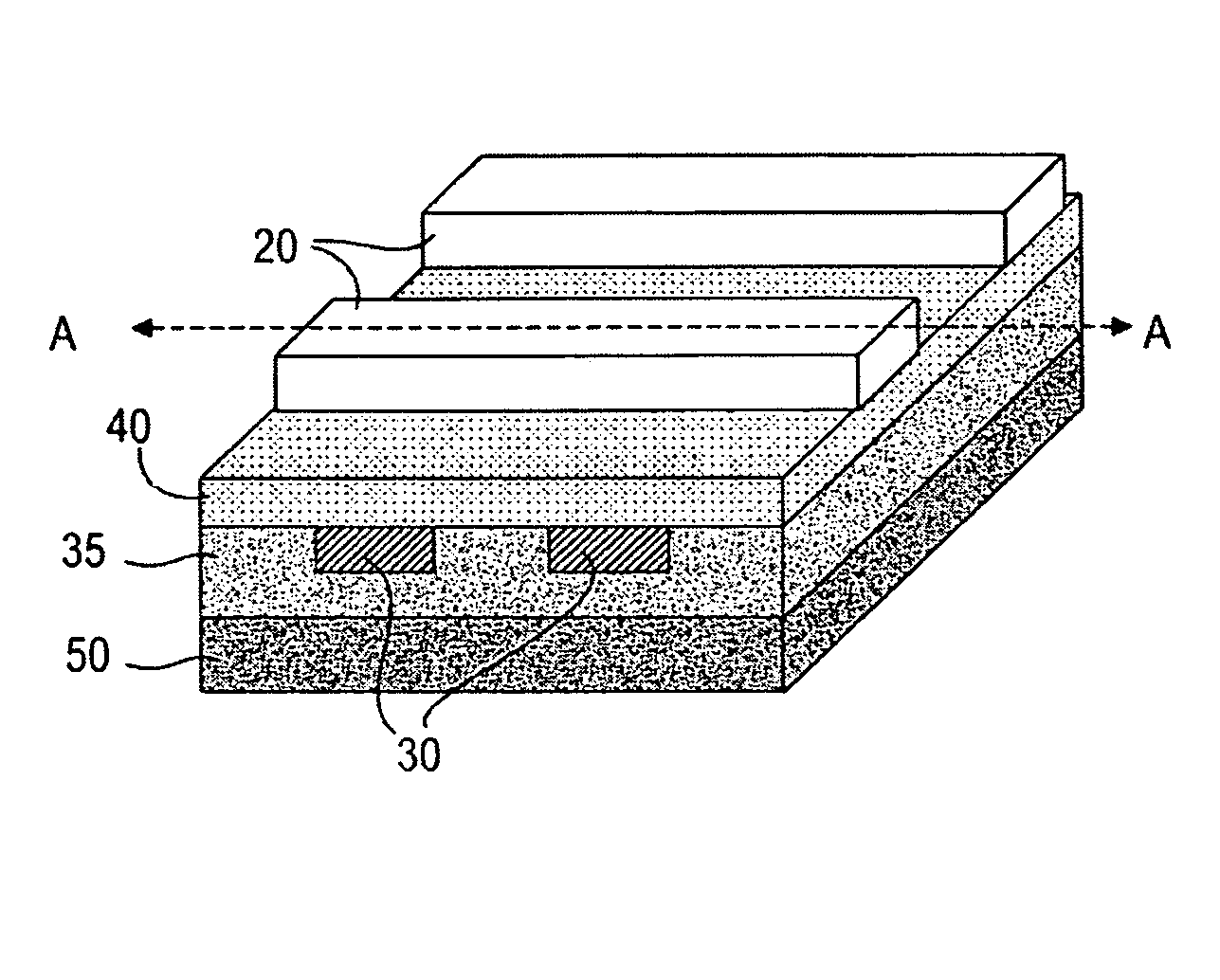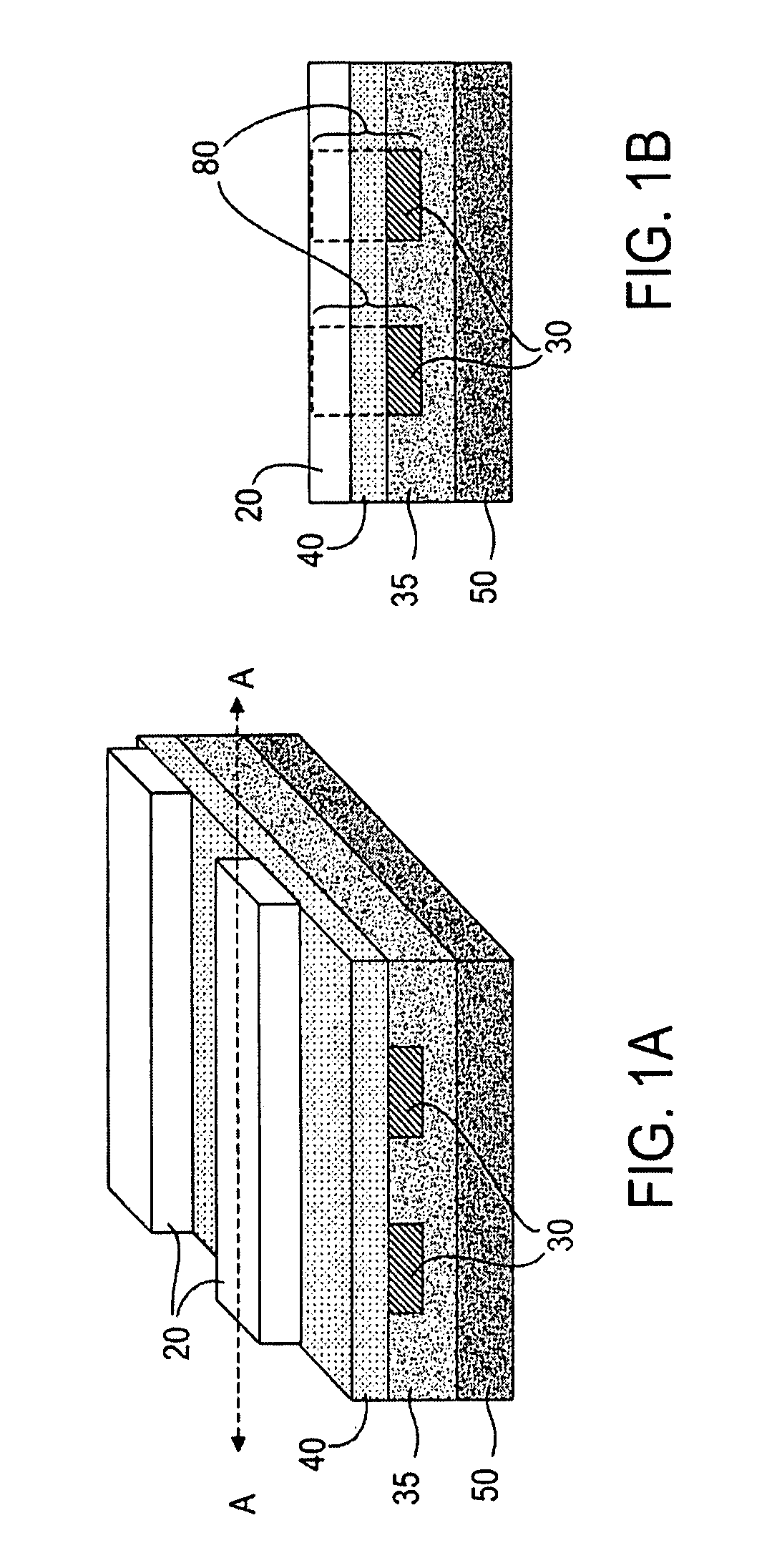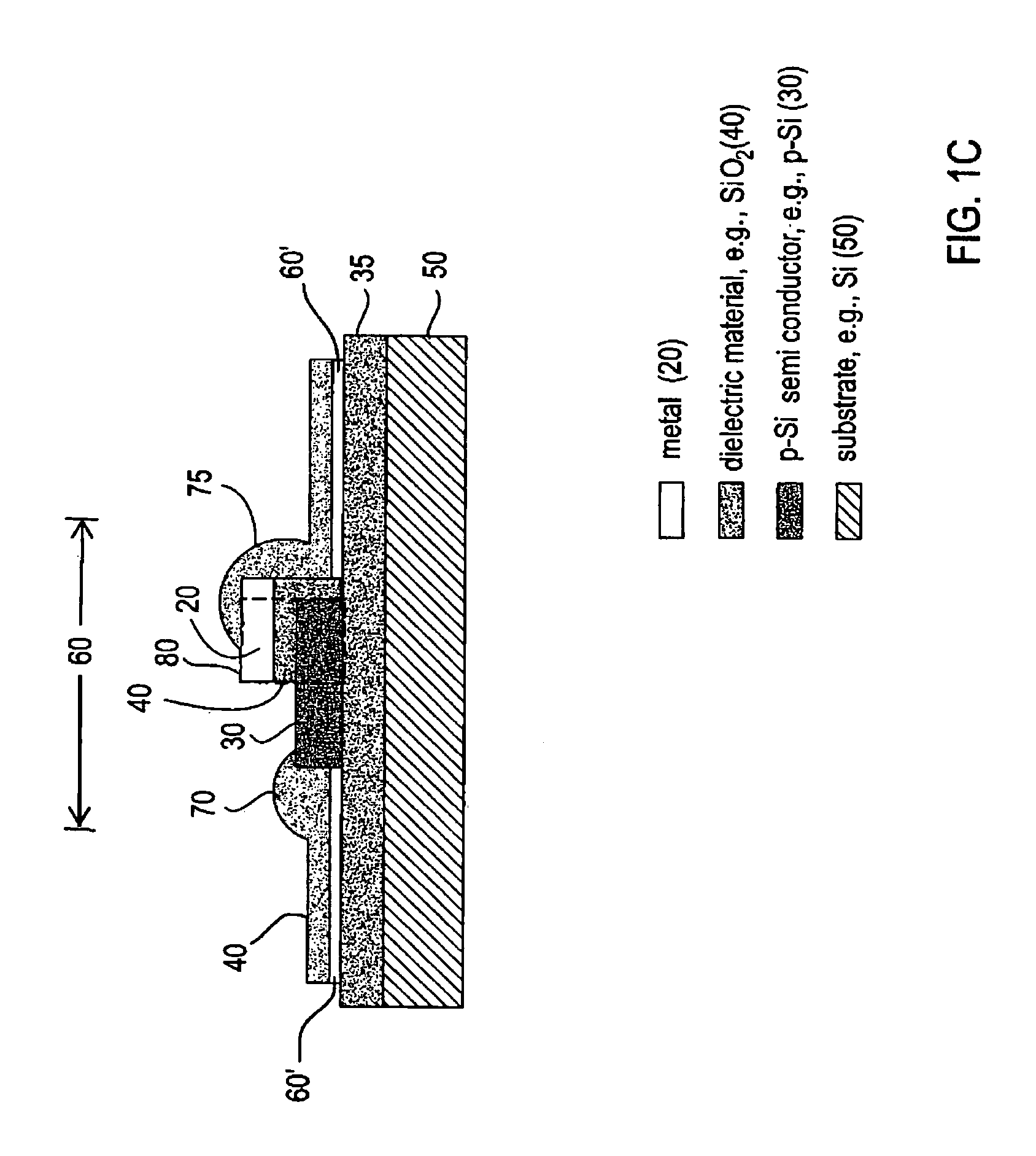Nanotunneling junction-based hyperspectral polarimetric photodetector and detection method
a hyperspectral polarimetric and photodetector technology, applied in the field of photodetectors, can solve the problems of limited application, low detectivity, slow response time, etc., and achieve the effect of high signal-to-noise ratio
- Summary
- Abstract
- Description
- Claims
- Application Information
AI Technical Summary
Benefits of technology
Problems solved by technology
Method used
Image
Examples
Embodiment Construction
[0029]The present invention is an antenna-coupled nanojunction photodetector and method of operation that senses tunneling current at a nanometer-scale tunneling junction (NTJ), rather than by conventional thermal or photon means. The nanojunction consist of a mesh of crossing nanowires and therefore lends itself to micro / nano fabrication techniques. Indeed, a large format array of nano-tunneling-junction-based detector can be formed on single FPA chip to provide the capability of simultaneous hyperspectral and polarimetric sensing within a spectral band. Moreover, the array enables uncooled, and low power multi-spectral imaging with a fast frame rate and temporal response, high directivity and high spatial resolution.
[0030]FIG. 1A is a perspective view of a nano junction photodetector array 2 comprising an exemplary set of four (4) nano tunnelinging junctions (NTJs) 80 with two stacks of nanowire arrays 20, 30 in a crossbar geometry interfaced with an ultra thin dielectric layer 40...
PUM
 Login to View More
Login to View More Abstract
Description
Claims
Application Information
 Login to View More
Login to View More - R&D
- Intellectual Property
- Life Sciences
- Materials
- Tech Scout
- Unparalleled Data Quality
- Higher Quality Content
- 60% Fewer Hallucinations
Browse by: Latest US Patents, China's latest patents, Technical Efficacy Thesaurus, Application Domain, Technology Topic, Popular Technical Reports.
© 2025 PatSnap. All rights reserved.Legal|Privacy policy|Modern Slavery Act Transparency Statement|Sitemap|About US| Contact US: help@patsnap.com



